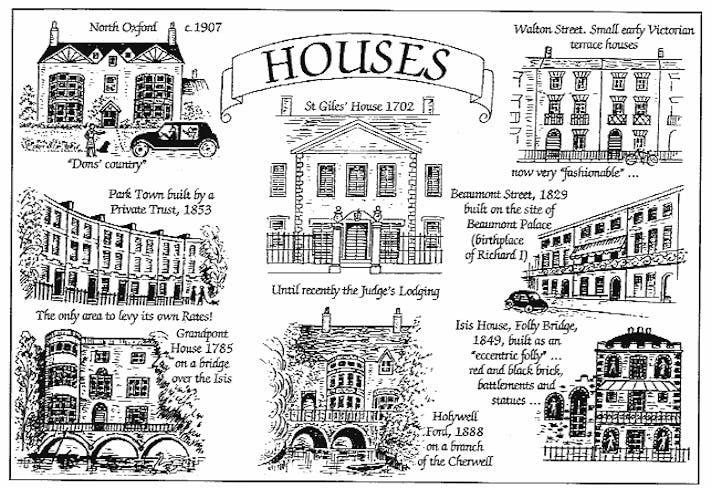Houses of Oxford

North Oxford inspires special affection, epitomising as it does Betjeman / Pym nostalgia, and that generation of great Anglo-Catholics and gentle academics which is rapidly slipping away. Some modern souls, it is true, condemn North Oxford as hideous and gothic, but these publications have never been given to such heights of sophistication.
Popular belief has it that the suburb was built for the dons, who acquired in 1877 the right to marry, and live outside their colleges. Although things eventually worked out this way, the area was first developed on a speculative basis, and many of the earliest residents were tradesmen.
Much of the land had belonged to St John's who began to sell off building plots on 99 year leases in 1855. All plans had to be approved by college architects, who were often themselves the designers. Houses became gradually smaller and less grandiose as the suburb moved north and west, reaching Southmoor Road by 1885, and Linton and Frenchay Roads by 1895. So, by the time the dons were released from celibacy, much of North Oxford was already developed, and their migration was gradual. As late as 1883, only 53 members of college lived out, including fifteen professors - and many of those had only moved as far as St Giles or the High.
The 99 year leases came home to roost in the 1960s and 70s, when many leases were available cheaply because they had only a few years to run. However, an Act of Parliament in around 1970 meant that St John's had to offer houses for sale to existing tenants, at prices based on their rateable value - so for a short period there were many bargains to be had. Outright purchases which became possible were of the order of £1,100 for a semi-detatched North Oxford villa - of a kind which would fetch around £300,000 today*.
Incidentally, 'North Oxford' is also used adjectivally, as in 'The nice North Oxford audience, velvet dress'd', or 'where the unnoticed canons and their wives / Live safe, North Oxford lives' (Betjeman, of course). It is not even unknown for one housewife to remark to another as she observes her (say) getting out her tricycle (sic) to transport the children to nursery school: "That's very North Oxford of you."
Park Town was the first planned development in the area. The site belonged to New College, and had been intended for a workhouse, until deemed unsuitable for that purpose. Building began in 1854, though the sweep of the crescents suggests the style of a hundred years before.
The Judge's Lodging would have been something of a country house when it was built, for an Oxford MP, Thomas Rowney. For many years it was used to house visiting judges. In 1875, Oxford High School for Girls was founded here.
The Folly is Cauldwell's Castle, built by a man who so feared attack by undergraduates that he lived in a fortified residence. The only injury to take place affected a student, who was shot from an upstairs window while trying to remove one of the brass cannons.
(*As you can probably tell from the prices, and perhaps the tone, this text was written some time ago, in the mid-1980's!)



